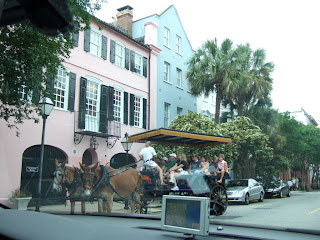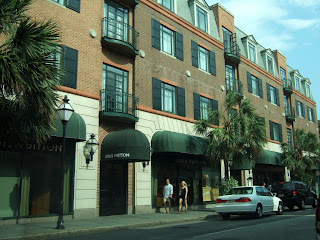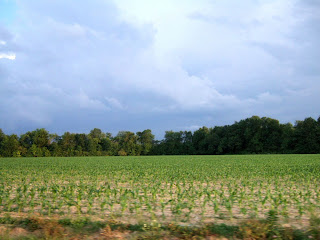
Charleston found in 1670 , named after King Charles II of England, who granted the territory to eight of his loyal ex-generals 3 years after he was throned in 1660. A small English settlement was finally established across the Ashley River 7 years later. The region was contested and periodically attacked by Spain, France and also American Indians and pirates. English colony retained control of the city till 1782. Charleston is a holy city. Besides English's Anglican Church, it was also home to Protestants and Catholics of French, Scottish, Irish and German decent, and the largest Jewish communities from Spanish and Portuguese ancestry. Today out of its 1400 historically significant individual structures, many are prominence of churches on its low-rise city state.



One cannot be considered as visited Charleston if he or she did not come to the Battery site, a place that have survived war, hurricanes, earthquakes and are now a symbol of southern elegance and perseverance.



A two hour carriage tour is one of the way to have the best overview into the city's rich history, antebellum homes, architecture, people, gardens and culture plus its harbor marina and forts.


Edmondston-Alston House (top left) was built by Charles Edmondston in 1825 and renovated into the Greek Revival style by 2nd owner Charles Alston It is now a home museum, remained with owner's original furniture, silver, books, paintings and some documents.



Charleston was the wealthiest and largest city in southern territory during 18th century due to its prosperity in the plantation dominated economy.




Rainbow Row along East Bay Street is a colorful landmark of Charleston. Many of these buildings were constructed in early 17th century and were shops with merchants' homes catered for wharf-front traffic initially. They were painted into Caribbean color by new owner Dorothy Porcher Legge during colonial period, and since then, all homes are pastel colored.





Charleston, chosen as the best-mannered city in United States, is well-know across the nation and beyond for its unique culture which blends traditional southern American, English, French and West African elements.




The door, the windows, the chimney....... made us step back in time to the antebellum period of Charleston's history.



Some well-known historical houses in Charleston.





Roman Revival styled building was the Market Hall, an administrative and meeting area for merchants at that time and now a Civil War Museum.



It's called "Four corners of laws" at Broad and Meeting Streets, because of the various arms of governmental and religious laws located at the square. City Hall representing municipal law, County Court House representing state law, Post Office representing federal law and St Michael Episcopal Church representing religion's law.




Hyman's Seafood Company at Market St. is a restaurant operated since 1890 offering a daily menus consisting of 15 to 20 different fish entrees cooked in traditional southern way or according to customers' specifications. But what impressed us more was its home-made ice-cream and its hospitality, its courteous manner and friendliness. Dine in just like eating at home.



Broad St.+ Market St.+ King St.+ Meeting St. with their fascinating designed buildings shaped out not only a downtown but a historical district for the city. The building of Herman Seafood Restaurant where we communicated with local people and had a wonderful dinner is along the main street. The building with diamond shaped roof, opposite Herman Seafood is the famous Louis Vuitton (LV) Shop.





The site of marina at Charleston Harbor, a place where Ashley River and Cooper River meet Atlantic Ocean.




The elegant old houses in the urban areas of Charleston are so beautiful and attractive.


Wide area of crops farming across country side at Charleston.



No comments:
Post a Comment